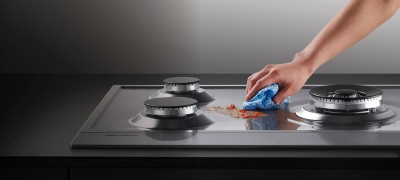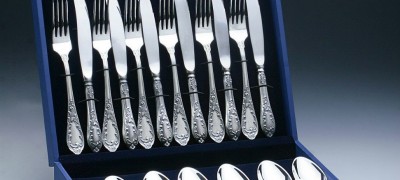How to bleach tulle at home
White tulle has one significant drawback: over time, even with very careful use, an unpleasant yellow or gray tint appears. How to bleach old tulle? What tools at hand can be used for this?
Tulle: history, advantages, disadvantages
History of creation
A bit of history. Most likely, tulle appeared in the 15th century in France. It was invented by order of King Louis XI. There are two versions of why the instruction was given to create such an unusual canvas.

According to the first hypothesis, the king wanted to watch his courtiers from behind the curtain in such a way that he himself was not visible.
And the second version says that tulle was invented at the request of the king's bride, who wanted her face to be hidden during the wedding, but the veil would not cause any inconvenience to her.
According to historians, the first version, after all, looks more like the truth, if we remember what an intriguer King Louis XI was. Be that as it may, weavers from the city of Tulle (hence the name) invented such an unusual material.
For the sake of fairness, we note that the British still assure that they were the first to create tulle, but they presented it to the world only in the 18th century.

Advantages
Traditionally, the benefits of tulle include:
- Transparency.
- Ease.
- Budget cost.
- The ability to "get along" with almost any other fabric.
- The ability to create a beautiful drapery.
- Ease of use (with the exception of mesh sheets - they accumulate dust).
- Easy to care for.

disadvantages
- Most of the canvases are made from synthetic fibers, which quickly fade in the sun.
- Blended fabrics also react negatively to ultraviolet light and high temperatures.
- Smooth materials are very difficult to cut (if you decide to make curtains yourself).
- Mesh tulle is "prone" to the appearance of clues.
- Natural tulle is good in every way except for the price.

Speaking about the features of tulle care, it is worth highlighting the following points:
- The tulle is self-washable, washing with other materials is unacceptable.
- White and colored canvases are washed separately.
- The water temperature is not higher than 30 degrees. And although some fabrics can be machine washed on a delicate cycle, it is still better to wash it by hand.
- Whitening is possible. But if we are talking about special bleaching compounds, then they must be chosen carefully, depending on the type of fabric.
- Do not wring out under any circumstances! Dry flat in a shaded place.
- Not all tulle can be ironed. If ironing is allowed, then this should be done through gauze or white cloth.
- Store folded, do not put anything on top.
- Some canvases can be dry cleaned, information is available on the label.

Tulle in the interior
The light and airy canvas is used in different styles, and in addition to the decorative function, it easily copes with practical tasks. For example, despite its airiness and transparency, tulle will easily provide you with some protection from prying eyes. Of course, these are not blackout curtains, and yet, if you are sitting at the table in the kitchen, hardly anyone will see your menu.

An interesting fact, although the tulle itself does not protect the room from the sun's rays, but by taking these same rays on itself, the canvas protects the upholstery and interior details from fading.

Another important advantage of tulle is the ability to provide a comfortable stay indoors at night for those who are afraid of total darkness.

Finally, it is the weightless tulle that will help you hide some "unsightly" things that you cannot fix. In particular, this may refer to bulky radiators: it is not possible to simply remove them somewhere, and the tulle allows you to slightly "shade" this element.

The color and density of the tulle is chosen depending not only on your personal preferences, but also on the functionality of the room. It is difficult to imagine the same option in the living room and in the kitchen.

Thanks to a decent assortment, today there are no problems in choosing tulle for a nursery. You will be offered an amazing variety of models with various prints, embroidery and decorative elements.

Tulle bleaching methods
Perhaps the only drawback of white tulle is the loss of the original boiling color. Moreover, this sad fact does not depend on how carefully you handle your curtains. Sooner or later, you will have to ask yourself: how to bleach curtains? Is it possible to do this at home?

Of course, you can use ready-made bleaching compositions that are sold in all household chemical stores within walking distance, or you can recall the proven folk remedies that are available in every home.

The main advantage of the tools at hand is that it is almost impossible to spoil the cloth with them. And the chemical compositions are quite aggressive, and the slightest "overkill" in concentration and quantity invariably leads to disastrous results. So, here are just a few ways on how to effectively bleach tulle at home.
Blue
It turns out that this substance with a rich color can provide an invaluable service in whitening your tulle. The peculiarity of this method of whitening is that the curtain is first washed in any powder and only then proceeds to remove yellowness and grayness.
A small amount of blue is dissolved in water (it is important that there is no sediment at the bottom). In the resulting solution, rinse the canvas. And finally, rinse again in clean water.

By the way, blue can also be used for machine washing, then the substance is poured into a container for a conditioner.
The main disadvantage of this method is the prospect of ruining the canvas with an inattentive approach. If the blue is not thoroughly mixed, stains will remain on the tulle, which is no longer possible to remove.

Salt
Amazing substance in its breadth of use.Salt has long been no longer associated only with culinary excellence. She is ready to help you in tulle bleaching.
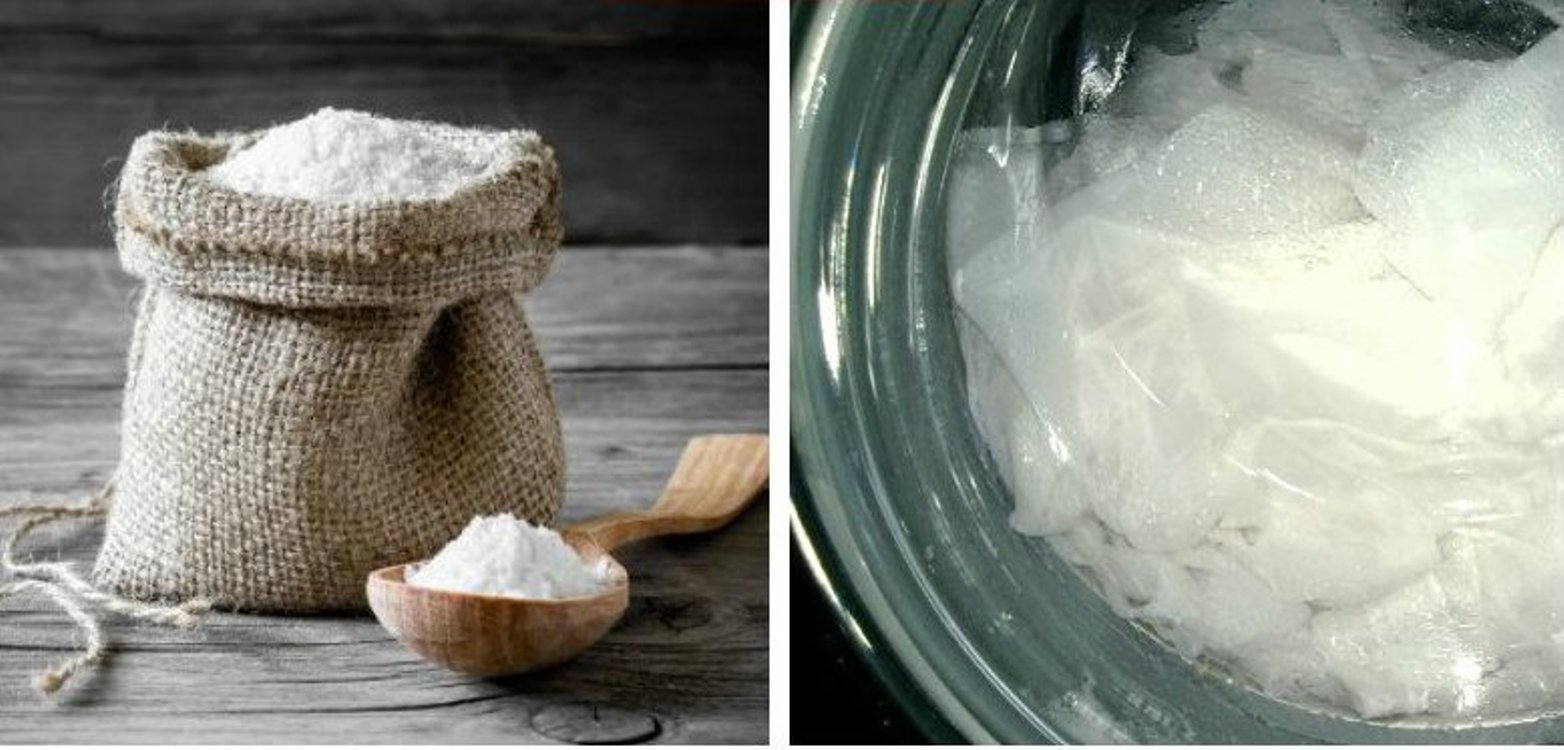
If from time to time (or for some other reason) a yellow or gray coating has formed on the tulle, use a saline solution. You will need 2 tablespoons per liter of water. The water should not be hotter than 40 degrees. Pour the resulting solution into a basin, but only after the salt has completely dissolved. Then add laundry detergent.
Mix the composition well and immerse the tulle in it. Leave to soak for at least 2 hours. During this time, the tulle must be periodically turned over so that the soaking occurs evenly. And after 2 hours, the curtains are rinsed and machine washed.
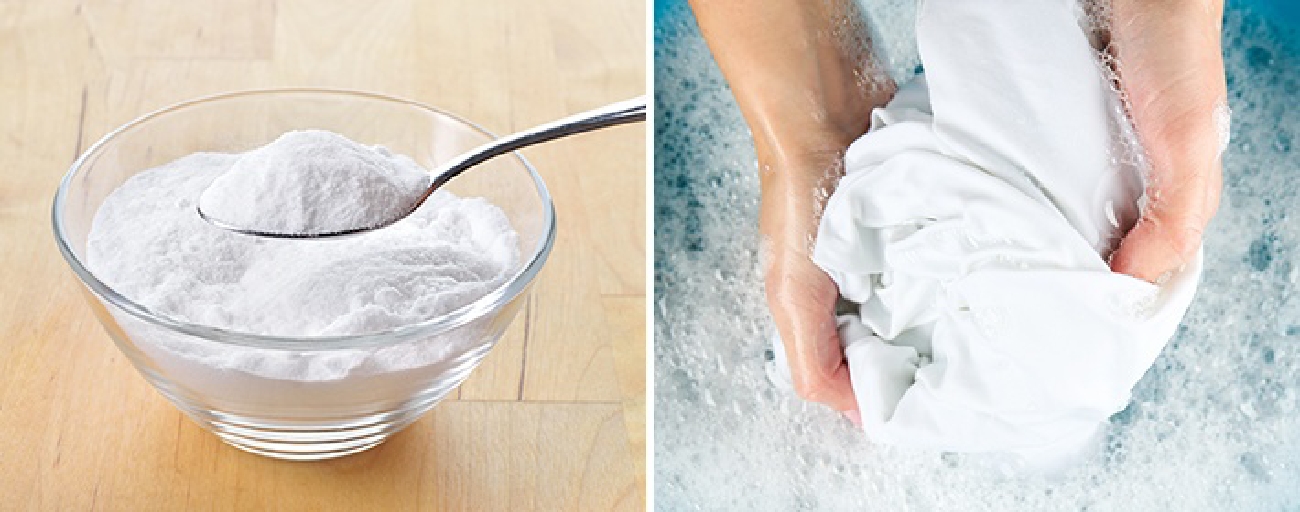
If the tulle is very yellow, then use a more concentrated solution (1 kilogram of salt in 6 liters of water). Soak for 1-1.5 hours (no more), and then rinse and wash in regular powder. Salt (sometimes soda is used instead) corrodes well even deep dirt.
Perhaps the only drawback of this method is the length of the process. In order to whiten, you will need at least half a day from the preparation of the ingredients to the final result.

Zelenka
Probably, most of us, having read that brilliant green can whiten something, frowned in disbelief. Well, yes, we are all familiar with the spots of diamond green, because of which we had to give up our favorite things. And yet, this substance will do you an invaluable whitening service. What is required for this procedure? The minimum set of ingredients: brilliant green, a basin, a glass.

To begin with, 5-10 drops of brilliant green are dissolved in a glass of warm water and left for a few minutes. The main thing is that there is no green sediment in the glass. If there is still a sediment, either add a little more warm water and stir again, or strain the solution so that no green clots get into the basin in which you will wash the tulle - this will hopelessly ruin the curtains.

Before sending the tulle into a basin with brilliant green, wash it in the usual way, and then dip it in the prepared solution. The tulle should be in the basin for no more than 3-5 minutes. During this time, gently rotate the blade so that it is evenly wet. Then let the excess liquid drain and hang.
The main advantages of this method are the speed of the process, the budgetary cost of the active substance and its availability. And the disadvantages include the fact that with the slightest violation of the technological process, the tulle can be spoiled once and for all.
Ammonia and hydrogen peroxide
The procedure will require ammonia and hydrogen peroxide (3%). Pour water heated to 60 degrees into the basin, and then add 1 spoonful of alcohol and 2-3 tablespoons of peroxide. Place the tulle in the solution for 30 minutes. Then rinse well, squeeze lightly with your hands and hang to dry.
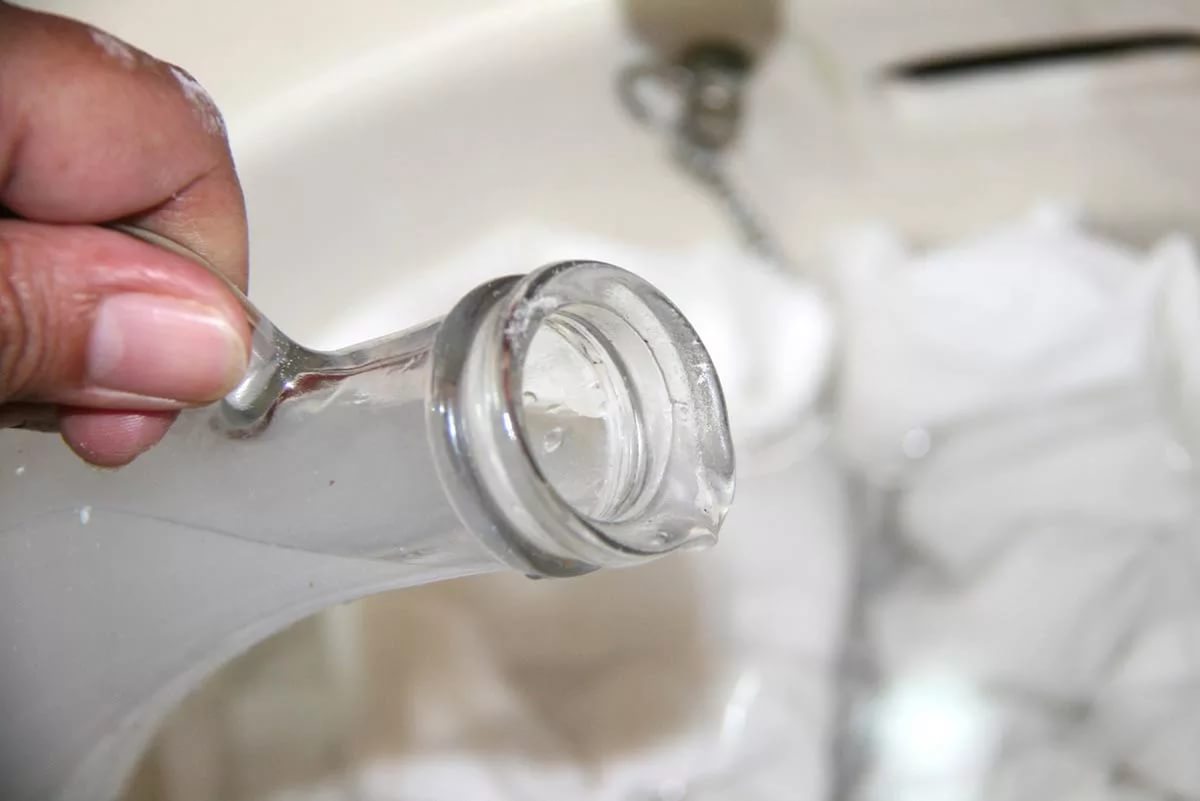
The only caveat: this method is only applicable for bleaching cotton fabrics. For nylon curtains, such procedures are fatal.
Starch
You will need starch and a large container. First you need to clean the tulle from dust. And in case of heavy dirt, it is better to just wash. Dissolve 250 grams of regular starch in a basin and soak the tulle. Leave for 5-6 hours, and then, without wringing, hang to dry, gently straightening each fold.

The method is budgetary and effective.The only drawback is that it will take a long time.
Potassium permanganate
This option also requires a particularly careful approach, otherwise there is a risk of ruining the curtains.
For bleaching, you will need: potassium permanganate, 100 grams of laundry soap (72%), a basin, a glass and a regular grater. First you need to prepare a soapy solution. To do this, pour the soap, crushed on a grater, with warm water and mix well until a homogeneous mass is obtained. Now we make a solution of potassium permanganate by stirring the powder particles in water.
The main thing is that the color of the resulting composition is pale pink, and there is no sediment at the bottom. After that, mix the soapy solution with a solution of potassium permanganate and pour it into a basin. It is recommended to keep the curtains in such a solution for no more than half an hour, and then wash them in the usual way in the machine.

The minimum time spent and the budget of bleaching products are the main advantages of such a process of getting rid of yellowness.
Digestion
A method known since the days of our grandmothers. For its implementation, no special substances are required: water and washing powder or laundry soap.
The algorithm of actions is as follows: in an enamel bucket (as a last resort, you can use a basin) dissolve the powder or soap, immerse the tulle in the composition and put on fire. Wait until the water boils and boil the fabric for an hour, stirring occasionally.
The disadvantages of this method of whitening include the need for constant presence, as well as the fact that it is morally outdated. Perhaps, it should be used only if all other methods were unsuccessful.

How effective are modern bleaches?
The answer to this question is rather controversial, since much depends on the specific situation: the composition of the fabric and the degree of pollution.

Modern manufacturers today offer quite effective products that, in their respect for the fabric, cannot be compared with the whiteness familiar to many. It's no secret that the use of whiteness over time leads to the destruction of the canvas, and the curtain can tear even from a light touch.
The innovative products, although not cheap, are distinguished by a decent result and a gentle effect on the fibers. Moreover, the result is obvious quickly enough, and you do not have to soak and rinse the tulle for hours.

The main thing is to clearly follow the instructions and not "overdo it" with concentration and exposure time.
Of course, each housewife decides for herself what to use in order to return the curtains to their original color at home. Someone prefers factory bleach, while others prefer folk remedies. The main thing is that the result should please you.
Video: how to bleach tulle?


